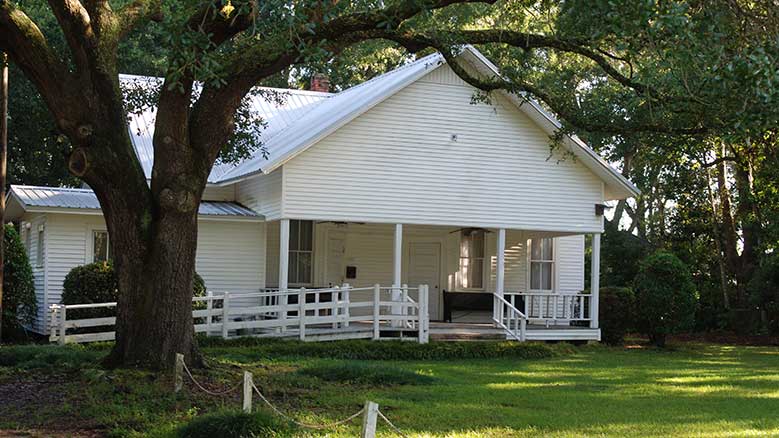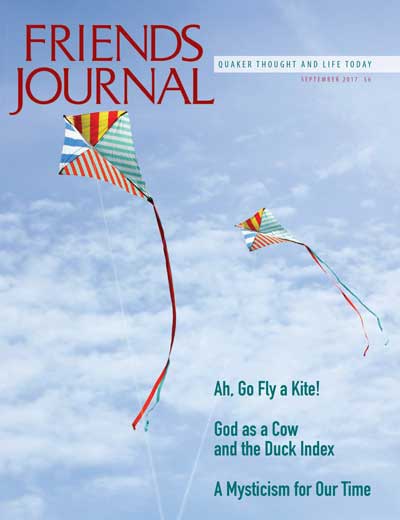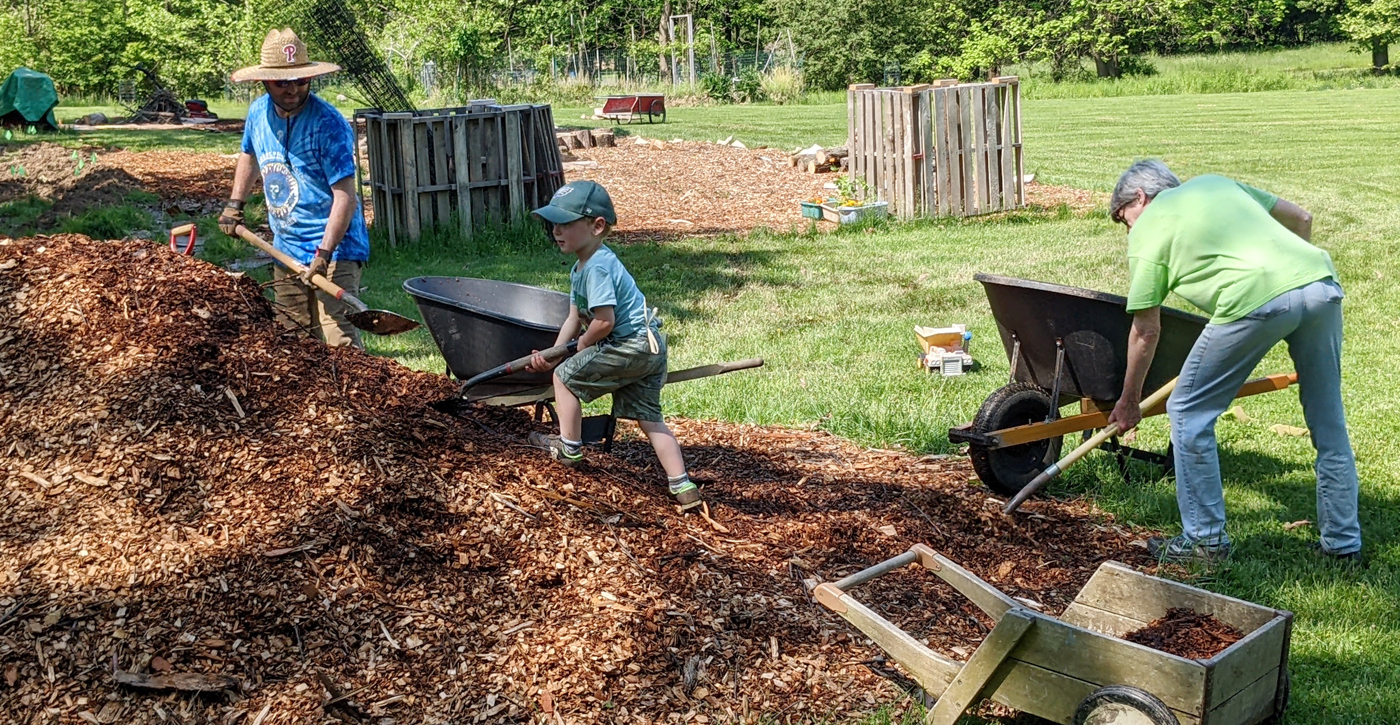Friends of Fairhope, Alabama

The Quaker community in Monteverde, Costa Rica, is widely known. But did you know that the group made its exodus from a meeting in the small town of Fairhope in coastal Alabama, with but a few Friends remaining behind to continue on as Fairhope Friends?
As Fairhope Friends approach our hundredth anniversary, we would like to share some of our less well-known stories of those who left and those who stayed behind.
It seems unlikely that in the early 1900s Quakers from various states would settle in a tiny village on the eastern shore of Mobile Bay in coastal Alabama. But Quakers by nature are an unlikely group.
Drawn by the mild climate, cheap land, and an interesting tax base, Quakers migrated to Fairhope from Ohio, Iowa, Minnesota, Indiana, North Carolina, and Kansas.
Fairhope, Alabama, was established in 1894 as a single tax colony by a group from Des Moines, Iowa, (the only other remaining single tax colony is in Arden, Delaware) and was loosely based on the single tax theories of economist, journalist, and social reformer Henry George, author of Progress and Poverty (1879). Land was purchased in the name of the Fairhope Single Tax Corporation and then leased under a 99-year renewable lease; ownership of improvements on the land belongs to the lessee.
The monies paid to the Single Tax Corporation by lessees include state, county, and local taxes (thus the name Single Tax), an administration fee, and a “demonstration fee,” intended to demonstrate the usefulness of the single tax theory.
Today about 4,500 acres of land which includes the downtown area and a little less than half of the remainder of the city is owned by the Fairhope Single Tax Corporation and leased out to individuals and businesses. Funds from the demonstration fee continue to be used to enhance the community by supporting such things as 63 acres of parks overlooking Mobile Bay, a 43-acre city nature park, funding for improving the local emergency room, the historical museum, and improvements to roads and sidewalks.
In 1908 there were about 500 total residents in Fairhope. By 1915 there were 20 Quaker families living there. As early Quakers were wont to do, in 1916 they began by building a one-room schoolhouse that was also used for meetings for worship.
Initially the Quakers in Fairhope met under the care of Stillwater Meeting in Barnesville, Ohio; in 1919 the group became Fairhope (Ala.) Meeting of Ohio Yearly Meeting with 52 members recorded. At that point, the meetinghouse, next to the school, had been completed at a cost of $1,346.65 plus $100 cost for the benches, and a cemetery was established on single tax land set aside from the Herman Battey family’s 80-acre dairy farm.
The meeting continued to grow, and their members set deep roots in the community, building farms, working in various professions, and raising their families.
But then Congress passed the Selective Service Act of 1948. On October 26, 1948, Marvin Rockwell sent written notice to the Local Draft Board in Foley, Alabama, advising of his noncompliance by refusal to register on religious grounds, and in December 1948, four young Fairhope Friends were arrested. Each entered a plea of nolo contendere for refusal to register for the draft and presented written statement to U.S. District Court Judge McDuffie in Mobile. The Court records reflect that the clerk read the statement of Marvin Rockwell because it was “a short one:”
I cannot imagine Christ in a military uniform taking training in the art of murder. I do not believe He would give His support to a program which forced the cream of young manhood to learn to take part in war.
Judge McDuffie’s comments at sentencing included these:
This is a government of laws and not of men, and so long as you live here, you should abide by the laws of the land . . . those who oppose the laws of this country and this form of government, even when it goes to war, should get out of this country and stay out.
Now I was wondering what some of you would do, if you were sitting in my place, having sworn to administer the law. There is nothing in the world I can do but sentence you.
Judge McDuffie then sentenced Wilford Guindon, Howard Rockwell, Leonard Rockwell, and Marvin Rockwell to prison for one year and one day, eligible for parole at the end of four months. He concluded, “I have done my duty by my dim lights . . .”
The four young Friends were taken to the Mobile county jail and later transferred to the Federal Correctional Institution in Tallahassee, Flordia, where they served four months and one day. When they were released on parole on February 27, 1950, they again refused to sign their draft registration cards; the Warden of the prison signed the cards for each of the four Friends so they would not be subject to immediate rearrest.
Back in Fairhope, the four rejoined the active young people’s Discussion Group affiliated with Fairhope Meeting. The four were obligated to stay in Alabama until they completed their parole on October 26, 1950, and during this next eight months, deep personal and spiritual issues were addressed in the small Quaker meetinghouse and many Quaker homes. Individual lives as well as the life of their Quaker community had experienced the imprisonment of their young men for refusal to take any part in the military draft, and they had viscerally felt the use of their taxes to support a war economy. These issues were raised against the backdrop of the reality that Fairhope was home. Fairhope was where their families and friends lived; here they had built their homes, their children were born, their loved ones were buried. In this little corner of southeast Alabama, they had worked long and hard to create a stable life by creating farms and developing businesses.
Fairhope Friends were facing the same dilemma presented to Friends in England in the mid-1600s: leave your country to build a new world of religious freedom or remain to work for religious freedom in your home country. A number of families from the meeting came to believe they should, as the judge suggested, “get out of this country and stay out.” Not all of the members of the meeting came to the same conclusion; some would stay, in the belief that here they could better work for and influence a change of the system. Unfortunately, those gleaning sessions were not reported; it is easy to imagine the difficulty individuals experienced in reaching a decision best for their specific circumstances.
For those who would leave, the next question was where to go. Canada was a consideration, but the climate there was too cold. (Remember they moved to Fairhope to get out of the snow.) They decided against Australia and New Zealand because of the distance and expense to return to visit family and friends. The group began to focus on Central America, and finally decided on Costa Rica where the government was stable, the economy sound, the poor were not as poor and the rich were not as rich, there was a large middle class, and the people were friendly. It was a pivotal point that Costa Rica had abolished its army by Constitutional Amendment in 1947.
The records showed 62 members of the meeting on July 12, 1950, and children attended the single-teacher Quaker school adjacent to the meetinghouse. When the parole of the four expired on October 26, 1950, many Quakers in Baldwin County began to make the move to Costa Rica. Those who left in the first wave numbered 31. Early in 1951, there were 44 who had moved. Ages of those moving ranged from two years to eighty.
The group bought 3,500 acres on the side of a mountain for $50,000 U.S. The location was both beautiful and remote. Their new home was 16 miles from an all-weather road. There was a dry weather jeep road within seven to eight miles from their land; the rest was an ox cart road.
There on the side of a mountain in Central America, Quakers from Fairhope, Alabama, cleared new ground and began again—building a school for their children, creating farm and pasture lands, a dairy business, and constructing a new community in a country in which it was unconstitutional for the army to even exist. It was the Quakers from Fairhope who founded Monteverde and set aside for conservation land that would become an initial tract in the internationally recognized Monteverde Cloud Forest Reserve. The Monteverde Quaker community became more active and widely known than its birthplace, Fairhope Friends.
The decision to leave for Costa Rica was not sponsored by Fairhope Meeting but was individual action by each of those making that choice. The minutes of the meeting are intriguingly silent about the discernments, discussions, and clearness sought over the issue of so many leaving their homes and country. There are only a few oblique references in the minutes to this huge upheaval in the meeting community. For example, on November 15, 1950:
Since our present Treasurer is likely to leave us before the regular time for appointing another, the meeting is united in appointing Roy Rockwell to fill the unexpired time. . . . Since our present recorder is soon to leave us, this meeting unites in appointing Isabella Battey to fill the vacancy.
After the mass exodus to Costa Rica, the small group that remained in Fairhope continued on, though times were rough. The school was closed and the building sold, moved to adjoining property to be used as a residence. Bertha Battey, a longtime clerk, said, “From time to time, Fairhope Meeting consisted of three elderly women.” On May 8, 1966, Fairhope Friends sent a letter to Ohio’s Stillwater Quarterly Meeting that said in part, “Due to more reduced active membership . . . our monthly meeting has been discontinued indefinitely. . . . We appreciate your concern in the past and will appreciate your prayers for a better future.” That better future began soon.
Because of the tenacity of the few who continued informally in the small meetinghouse, Fairhope Friends formally began again on November 24, 1967, as Fairhope Meeting Independent. Although it has not rebuilt its earlier membership numbers, it is a strong presence in the community. Each week we gather in the meetinghouse built in 1917, to sit on handmade benches that cost $100 for materials 100 years ago. Though updated, the meetinghouse is much the same. Fairhope Friends remains independent, and we continue to use the Friends’ Cemetery as a final resting place for loved ones.
While those who moved to Costa Rica recreated a farming life on a blank, rough-hewed slate, the Quakers who remained in Fairhope have experienced very different challenges in an evolving secular community. Monteverde and Fairhope are each the reflection of difficult and well-grounded decisions. Both meetings provide salt to their respective communities; each strives to remain in the Light, to listen for God. Fairhope Friends contribute financially to Monteverde; some of our members lived in Monteverde at one time, and though they have returned to Fairhope, they have relatives in Monteverde. You will find many of the same family names on the headstones in our respective cemeteries.
In the years following the great migration in the 1950s to Costa Rica, the makeup of Fairhope Friends has changed to reflect a typical slice of modern Baldwin County. Most of the current members are convinced Quakers; a minority are birthright Quakers. In the winter, the number attending swells as snowbirds from states such as Ohio, Iowa, Pennsylvania, Michigan, and New York migrate to the warm climate. The old meetinghouse remains much the same, with the original simple wooden pews, but with central heat and air conditioning added for comfort.
As an example of the vitality of this small group, as well as a willingness to listen and act, a Friend recently asked that the meeting consider a minute recognizing and honoring LGBTQ individuals. The clerk asked that person to work with several others to draft and distribute a proposal. At the following meeting for business, a proposal was deeply considered; it was the sense of the meeting to adopt the minute. And then the group moved on—in one meeting for business that lasted one hour.
Fairhope is a bit of an enclave in the Deep South, more like Boulder, Colorado, than its neighbor, Mobile, Alabama. In some ways, we are as isolated as the Monteverde Friends. Southern Quakers is almost an oxymoron. Those of us who are isolated need to look further than the QuakerFinder.com search limit of 100 miles. From Fairhope, the closest meeting to the east is Tallahassee, Florida, 243 miles away. There is Birmingham, Alabama, 290 miles to the north and Huntsville, Alabama, 310 miles away (the only other Quaker meetings in the state of Alabama). There is a meeting in New Orleans, Louisiana, which is a 165 mile drive and another in Baton Rouge, Louisiana, 220 miles to our west.
In our own ways, Fairhope Friends respond to the same quiet nudge that propelled part of our group to Costa Rica. Some of our members live in the Fairhope area to be a part of this meeting; people who were drawn to Fairhope for other reasons have found their way to us. One of our members regularly makes a 140-mile round trip to meeting. Perhaps we are like the loam that slowly accumulates at the base of the ancient red woods—worth that is not to be measured in standard units of size or time.





























When I was 16 going on 17 back in 1969 I moved back to Fairhope, where I was born, to attend college in Bay Minette, AL and my family followed me when my father got a job teaching in the same college. My mother is Edna Rockwell, daughter of Ruben Rockwell, one of the folks who founded Monteverde, set up the Hydro-electric plant, and machine shop that kept so much going there. At that time he was back in the US and had taken over the Meeting house property and lived in the old one room school house next door. When I came down I started to attend meeting. At the time there were two older women I’d guess in their 80’s who attended, I personally dropped the average age of the congregation by 20 years. The Vietnam war was in session and I was due to register for the draft. When my family moved down we all start to attend and invited others, new and old to attend starting a re-vitalization of the meeting. I worked with my Uncle, Lucier Rockwell, in renovating the meeting house adding a bathroom (making the outhouse redundant), air conditioning and heating, securing the sliding wall that had separated the men’s side of the meeting from the women’s side as well as adding a small kitchen to support the monthly pot lucks. When we moved to Pensacola FL a few years later we drove back and forth supporting the regrowth of the meeting. I now live in CT (Where the Rockwell originally immigrated) but whenever I drop in to visit relatives in Fairhope I will attend meeting. I still consider myself a member of the Fairhope Friends meeting and am a member of the Fairhope Single Tax Corporation
Thank you for this article. My family, the Ruben Rockwelll family, moved to Fairhope in (I think) 1904. Reuben and Helen (my grandmother) and my uncle David were among the approximately 20 Rockwells in the initial group that moved to Monteverde. Reflecting the mixed thoughts about go/stay, my mom and her other four brothers stayed (though two of them eventually lived in Monteverde for a couple of years). There is so much to be told about the Fairhope and Mnteverde communities.
My immediate family was part of a late-sixties, early 70’s renewal at the Fairhope Meeting, perhaps aided by the US involvement in Vietnam Nam. Still, we always felt like outsiders to the surrounding community. Peace is a tough sell in south Alabama.